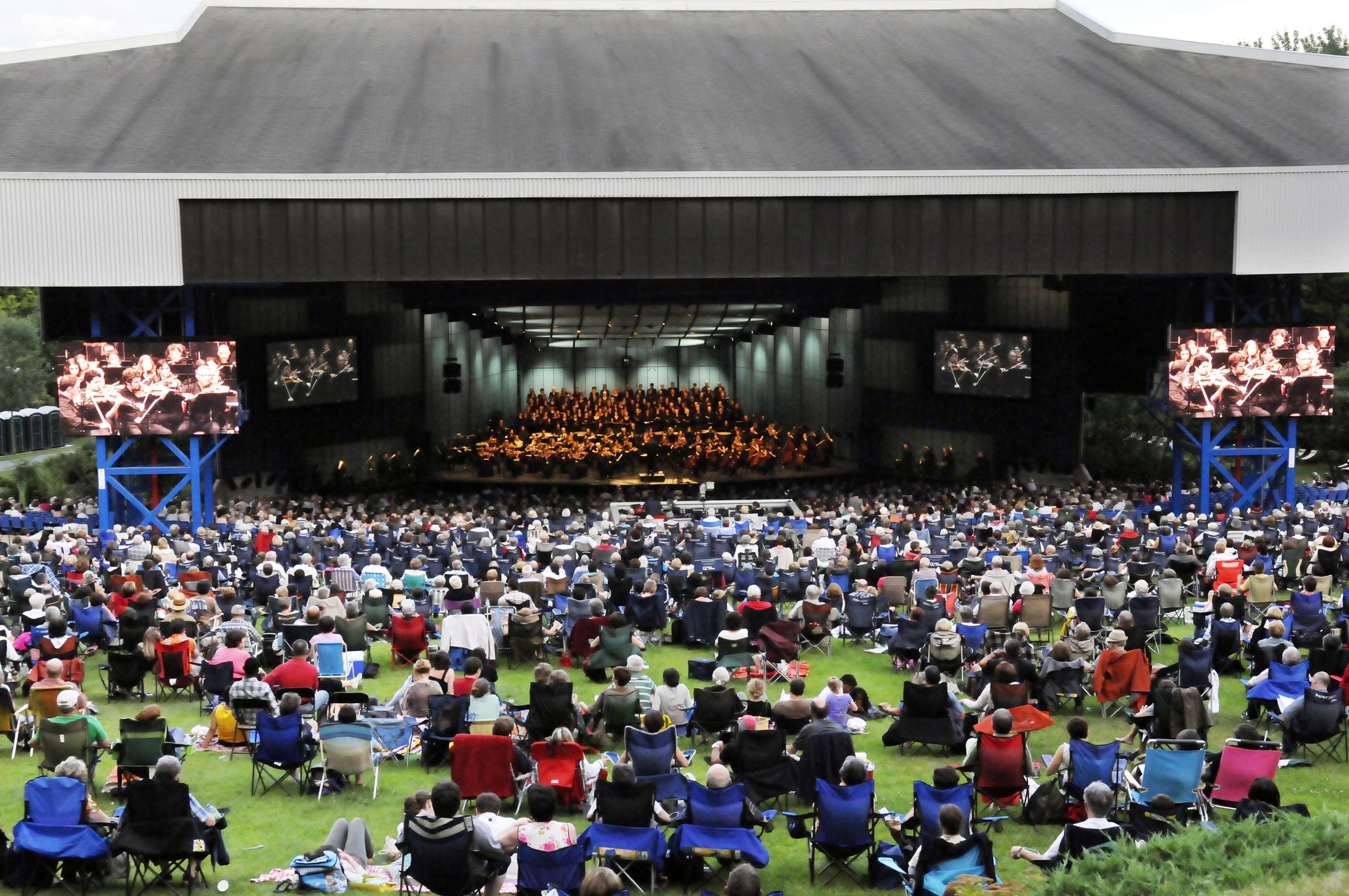|
Back
Festival de Lanaudière Opens with an Absorbing Berlioz Requiem Montreal
Joliette (Amphithéâtre Fernand-Lindsay)
07/07/2012 -
Joan Tower: Fanfare for the Uncommon Woman, n° 1
Aaron Copland: Fanfare for the Common Man
Hector Berlioz: Requiem (Grande Messe des morts), opus 5
Frédéric Antoun (Tenor)
Chœur Saint-Laurent and the Cantata Singers of Ottawa, Michael Zaugg (Chorus Director), Orchestre du Festival, Jean-Marie Zeitouni (Conductor)

(© Christina Alonso)
Festival de Lanaudière, Canada’s largest summer music festival (situated less than an hour’s drive northeast of Montreal), opened its 35th season with Berlioz’s Grand Mass for the Dead. It was an odd choice, nevertheless, a felicitous one. The young Canadian conductor, Jean-Marie Zeitouni, Music Director of the Columbus Symphony Orchestra and Music Director Designate of I Musici de Montréal, led the Orchestre du Festival and the combined voices of the Chœur Saint-Laurent of Montreal and the Cantata Singers of Ottawa in an absorbing performance. Zeitouni’s evenly-paced, moderately-slow tempos, clocked in at 88 minutes, maintained a graceful and respectful cathedral of sound that rarely wavered. From the thrilling “Tuba mirum” to the grandiose finale of the “Lacrymosa” to the ethereal “Offertorium” there were myriad moments to savour. This was an impressive undertaking for the opening night of a summer pick-up orchestra comprised of local musicians, including members of the Orchestre Métropolitain and the Orchestre symphonique de Montréal.
The major drawback of the performance was the reduced forces in the four brass choirs for the “Tuba mirum.” There were only two trumpets and two trombones in each of the two downstage choirs, and from what I could see, the same configuration, except for the addition of one tuba each in the two choirs at the back. There were the required eight timpani. Coordinating all this is a challenge under the best of conditions, so one cannot begrudge the conductor for not delivering the disciplined, riveting performance that Berlioz envisioned for this movement.
Zeitouni and the orchestra were mostly attentive to the dynamics and tempos indicated in the score. The playing from all sections of the orchestra was tight and in unison, and most entries were on cue. On some occasions there was little or no distinction between piano, pianissimo and pianississimo.
Frédéric Antoun, despite claiming to be indisposed, delivered a captivating solo in the “Sanctus.” His darkly-timbered, high-pitched tenor suited the required mix of tenderness and gravitas. The subsequent joyful hosannas from the chorus pulsed with rhythmic energy.
The chorus was well prepared by Michael Zaugg and sang splendidly, although the tenors’ intonation was slightly off at the beginning of the “Agnus dei.” The trombones in this movement were spot on, sustaining a velvety timbre throughout.
The concert began with two three-minute fanfares that were not announced in the season brochure, nor on the festival’s Web site. (Perhaps organizers realized at the last minute that it was not quite appropriate to open a summer festival with a mass for the dead.) Moreover, they were not played in the order presented in the evening’s printed program. The first, Joan Tower’s Fanfare for the Uncommon Woman, noº 1, dedicated to “women everywhere who take risks and are adventurous”, suffered from timid entries and lack of confidence from the brass. It may have fared better if the program had opened with Copland’s Fanfare for the Common Man. The latter is more familiar and the brass would have been warmed up for Tower’s Fanfare. In Copland’s work, dedicated to “the millions of unnamed men who made a contribution to the war effort” (World War II), the brass were tighter and Zeitouni brought out the instrumental colours of the orchestra to greater effect. The percussion, nestled between the trumpets stage right and the trombones stage left, were thrilling.
Attendance in the Amphithéâtre and on the lawn was not as abundant as one would have expected for the opening of a festival on a glorious summer evening. This may have been due to the challenging program.
Earl Arthur Love
|